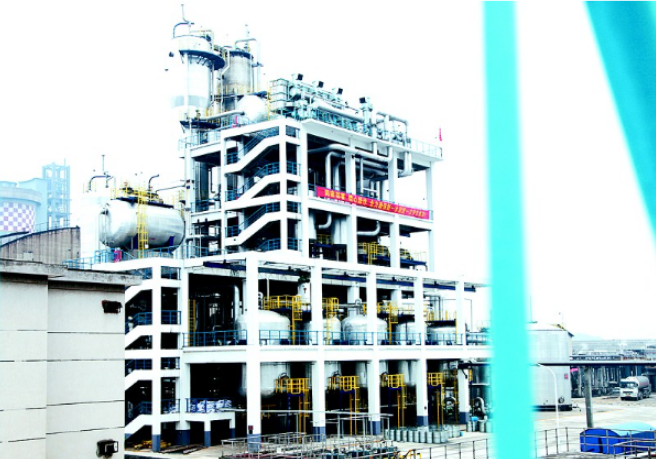Hydrogen peroxide (H2O2) is a versatile chemical compound with numerous industrial, commercial, and medical applications. It is used as a bleaching agent, disinfectant, oxidizer, and rocket propellant, among other uses. There are several methods for producing hydrogen peroxide, each involving different processes and reactions. In this comprehensive overview, we will explore some of the primary processes used in the industrial production of hydrogen peroxide.
1. Auto-oxidation of Anthraquinone:
The auto-oxidation process is one of the most common methods for producing hydrogen peroxide on an industrial scale. It involves the auto-oxidation of anthraquinone to form hydrogen peroxide and its subsequent extraction from the reaction mixture. This process is widely used due to its high efficiency and relatively low cost.
The key steps involved in the auto-oxidation process are as follows:
Step 1: Hydrogenation of Anthraquinone:
Anthraquinone, a polycyclic aromatic compound derived from coal tar or petroleum, is hydrogenated in the presence of a catalyst to form the corresponding anthrahydroquinone.
Step 2: Oxidation of Anthrahydroquinone:
The anthrahydroquinone is then oxidized by air or oxygen in the presence of a catalyst (usually a transition metal complex) to form hydrogen peroxide and regenerate anthraquinone.
Step 3: Hydrogen Peroxide Extraction:
Hydrogen peroxide is not stable at high concentrations, so it is extracted from the reaction mixture using a suitable solvent. The solvent absorbs the hydrogen peroxide, and the resulting solution is further processed to obtain a high-purity hydrogen peroxide product.
2. Direct Synthesis from Hydrogen and Oxygen:
The direct synthesis of hydrogen peroxide from hydrogen and oxygen is an attractive method due to its simplicity and potential for on-demand production. However, this process remains challenging due to the difficulties in controlling the reaction to favor the selective formation of hydrogen peroxide over other byproducts.
The main steps involved in the direct synthesis process are as follows:
Step 1: Hydrogen and Oxygen Feed:
A mixture of hydrogen gas and oxygen gas is fed into a reactor.
Step 2: Catalyst Injection:
A suitable catalyst is injected into the reactor to promote the selective formation of hydrogen peroxide.
Step 3: Hydrogen Peroxide Formation:
Hydrogen gas and oxygen gas react in the presence of the catalyst to form hydrogen peroxide.
Step 4: Separation and Purification:
The reaction mixture is then separated and purified to obtain a high-purity hydrogen peroxide product.

3. Electrochemical Process:
The electrochemical process for producing hydrogen peroxide involves the reduction of oxygen at the cathode of an electrolytic cell. This method offers the advantage of producing hydrogen peroxide directly from water and oxygen, eliminating the need for additional feedstocks.
The main steps involved in the electrochemical process are as follows:
Step 1: Electrolysis Setup:
An electrolytic cell is set up with an anode and a cathode separated by an ion-conducting membrane. An aqueous solution containing oxygen is introduced into the cell.
Step 2: Oxygen Reduction:
At the cathode, oxygen from the solution is reduced to form hydrogen peroxide.
Step 3: Hydrogen Peroxide Formation:
The hydrogen peroxide formed at the cathode can be collected and further processed to obtain the desired concentration and purity.
4. Peroxide Process:
The peroxide process is another method for producing hydrogen peroxide from hydrogen and oxygen. It is similar to the direct synthesis process but involves the use of a palladium-based catalyst to enhance selectivity.
The main steps involved in the peroxide process are as follows:
Step 1: Hydrogen and Oxygen Feed:
A mixture of hydrogen gas and oxygen gas is fed into a reactor.
Step 2: Palladium-Based Catalyst:
A catalyst containing palladium is used to promote the selective formation of hydrogen peroxide.
Step 3: Hydrogen Peroxide Formation:
Hydrogen gas and oxygen gas react in the presence of the palladium-based catalyst to form hydrogen peroxide.
Step 4: Separation and Purification:
The reaction mixture is then separated and purified to obtain a high-purity hydrogen peroxide product.
5. Anthraquinone-Modified Methods:
Several modifications to the auto-oxidation process have been developed to improve efficiency and reduce environmental impact. These methods involve variations in the type of anthraquinone used, the use of co-solvents or additives, or different reaction conditions.
Advantages of Anthraquinone-Modified Methods:
- Increased hydrogen peroxide yield and efficiency.
- Reduced energy consumption.
- Lower environmental impact.
Conclusion:
Hydrogen peroxide is a valuable chemical compound used in various industries and applications. Different processes are employed for its production, each with its advantages and challenges. The auto-oxidation of anthraquinone is the most widely used industrial method, while direct synthesis from hydrogen and oxygen, electrochemical processes, peroxide processes, and anthraquinone-modified methods offer alternative approaches to produce hydrogen peroxide. Each process has its unique features, enabling manufacturers to choose the most suitable method based on factors such as cost, efficiency, scalability, and environmental considerations. Continuous research and development in hydrogen peroxide production technologies are expected to further improve efficiency, reduce costs, and increase sustainability in the future.
If you want to know more information about Hydrogen peroxide plant, please contact us. We will provide professional answers.














